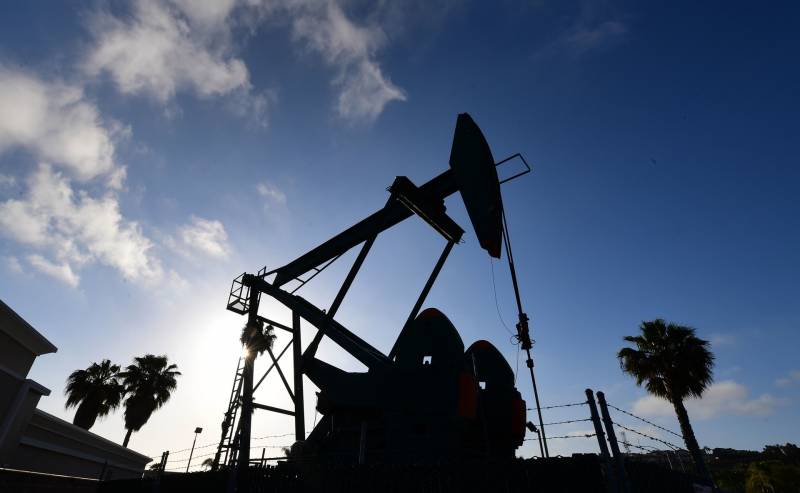In addition, environmental justice groups have long criticized California’s carbon market, saying that former air board chair Mary Nichols had done too little to protect vulnerable Californians living in the shadow of fossil fuel polluters such as oil refineries and power plants.
Randolph addressed those concerns at the hearing, but as market administrator of the cap-and-trade program, she was cautious about saying anything that might affect the market for carbon credits.
“This remains an important space for us to work directly with environmental justice and community organizations to ensure that their views are incorporated into our work,” Randolph said.
California in 2016 pledged to cut its climate-warming pollution 40% over the next 10 years, and it is relying on the carbon trading program for nearly half of those reductions in 2030.
“We’re calling on all our existing climate policies to do more in the next decade. We have no choice but to accelerate the rate of emission reductions dramatically,” Blumenfeld said Tuesday.
No changes to the program would happen soon. The process will begin this spring, and the final plan is expected to be presented to the board in late 2022, Blumenfeld said.
“Opportunities to further strengthen the cap-and-trade program will begin as part of the public process to update the scoping plan. To do so now would be premature,” Blumenfeld said.
Today’s hearing was held by a Senate budget subcommittee chaired by Sen. Bob Wieckowski, a Democrat from Fremont. Wieckowski asked Randolph, who was appointed chair of the air board in December, whether she planned to revisit the weight of cap and trade in the new scoping plan.
“Yes, basically, the answer is yes,” Randolph said. “The scoping plan process will rely on analyzing the existing programs and authorities to determine how to achieve reductions and then to determine what additional reductions need to be addressed by cap and trade.”
The statements at the hearing reaffirm Blumenfeld’s commitment in a letter to Wieckowski over the summer to weigh “the extent to which the state’s climate strategy should rely on the cap-and-trade program reductions relative to other approaches.”
The discussion met resistance from oil and gas producers, but was welcomed by environmental justice groups.
“Changing this market-based system now would only create economic uncertainty for businesses and raise costs for consumers, all at a time when the state’s overall economy is in a precarious position,” said Rock Zierman, CEO of the California Independent Petroleum Association, which represents independent crude oil and natural gas producers.
Kevin Slagle, a spokesperson for the Western States Petroleum Association, said “cap and trade is doing exactly what it was intended to do — driving innovation — which has helped the state meet its climate goals almost four years earlier than anticipated.”
California’s environmental justice advocates have long opposed the program because they say it comes at the expense of climate policies that would benefit low-income communities of color that are disproportionately burdened by air pollution.
“The upcoming CARB scoping plan update is an opportunity to address the bifurcation of climate and air pollution, and move towards a mechanism that will allow for direct emissions reductions,” said Neena Mohan, climate justice associate at the California Environmental Justice Alliance.
In January, the program entered a new phase that adds new requirements through 2030. These include doubling the rate at which the emissions cap drops and adding a price ceiling for credits to prevent costs for industries from increasing past a certain point.
Ross Brown with the Legislative Analyst’s Office, said at the hearing that California’s 2020 greenhouse gas target, which the state reached four years early, required cutting emissions by about 1% each year. To meet the 2030 goals, California would need to increase those cuts to roughly 4% each year, he said.
“Just having the program in place is not sufficient to ensure that the program is achieving the goals,” Brown said. “Implementation of the program and design of the program matters a lot.”
One concern that Brown and others have raised is that companies may be banking unused pollution credits, called allowances, to use later.
“It’s possible that when you get out into the later years up to 2030, that large bank of allowances could be used to comply with the program,” Brown said. “And as a result, the state might not be close to its ambitious emission targets out to 2030.”
Wieckowski said that problem haunts him. “I lose sleep at night, knowing that we were told that we couldn’t amend that bill, when staff and you in particular were saying that this allowance problem was a very big problem,” he said. “And now we have to deal with it.”
The Independent Emissions Market Advisory Committee, which is made up of researchers and academics appointed by the governor and leaders in the Legislature, has proposed metrics for tracking the bank of extra credits.
“I think we are going to see that the number of banked allowances is far in excess of what the board said in its previous rulemaking statement,” said Danny Cullenward, a lecturer at Stanford Law School and a member of the emissions advisory committee. He said an air board analysis of banked allowances is expected by the end of this year
The hearing comes one day before a cap-and-trade auction where companies and others can bid to purchase pollution credits. The timing raised red flags for oil companies covered by cap and trade.
“Our concern is that the hearing may unnecessarily create uncertainty about the cap-and-trade program that could affect the auction,” Slagle said.
Cullenward questioned, however, whether those concerns were justified. “Why is it not appropriate to ask questions about the performance of the program? If not now, when is it okay?” he said. “Neither the legislature nor the administration did anything in a way that would prejudice people’s behavior at the auction tomorrow.”

